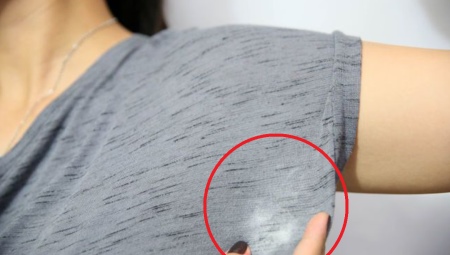Antiperspirants play an important role in the life of every person. The use of these products has, in addition to its positive properties, one important drawback - traces of clothing, which can be very difficult to remove. We have to consider options for dealing with such a nuisance.
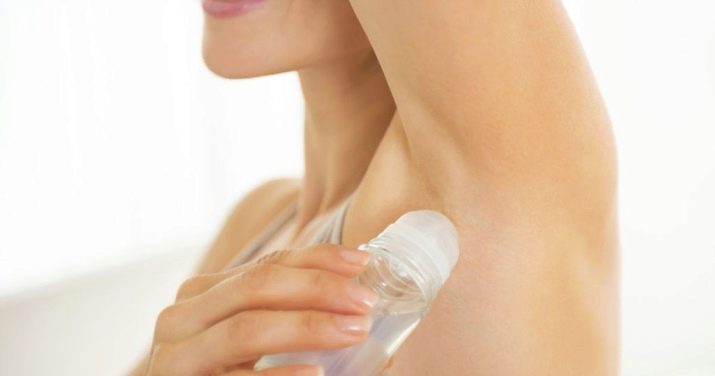
Features of removing traces from clothes
Removing stains from deodorant is easy if you know some features of this process. First things first. You may have noticed that an antiperspirant leaves different stains on clothing. There is a logical explanation for this:
- White spots appear due to the contact of a non-dried product with the material, they resemble a whitish, waxy coating;
- yellow spots formed as a result of the reaction of aluminum salts contained in the antiperspirant with sweat secretions.
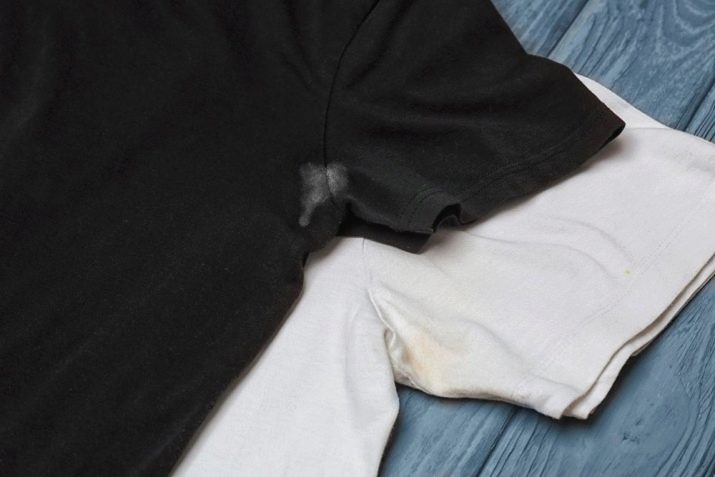
Any of these stains should be removed immediately using one of the methods, which we will discuss later. Each wash without pre-treatment exacerbates the situation and complicates the process of getting rid of stains. The chemicals that are contained in washing powders further fix the pollution, making it stable and difficult to remove. Also, such an effect is possible as a result of exposure to hot water.
Fabrics differ in type, structure and color. These features must be considered in the fight against traces of antiperspirant.
Natural fabrics
When working with flax, cotton and other natural delicate materials, it is better to use ammonia or other substances that are designed for such fabrics. Any remedy with chlorine in the composition can not be used. The most convenient and no less effective is the spray, which delicately affects things from them.
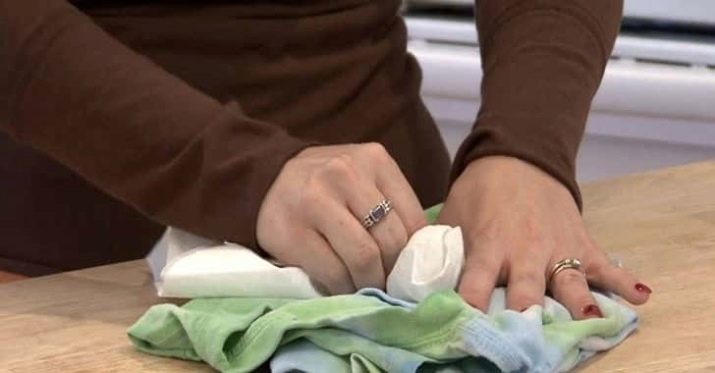
Wool and silk
To work with wool and silk, you need to choose gentle means, which include salt, soap and soda. By choosing aggressive varieties, you can easily spoil the product.
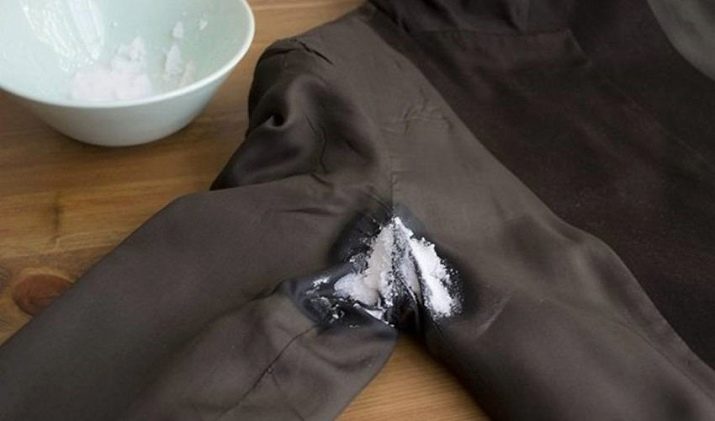
Denim
Jeans rarely need stains from the use of deodorants. But sometimes on the shirt you can find characteristic traces. When working with denim Do not use bleachesthat may leave light stains on clothing. The exception applies only to oxygen products. Also denim does not tolerate hot water, drying in the sun and high speeds. If you adhere to these recommendations, even old spots will be removed efficiently and safely.
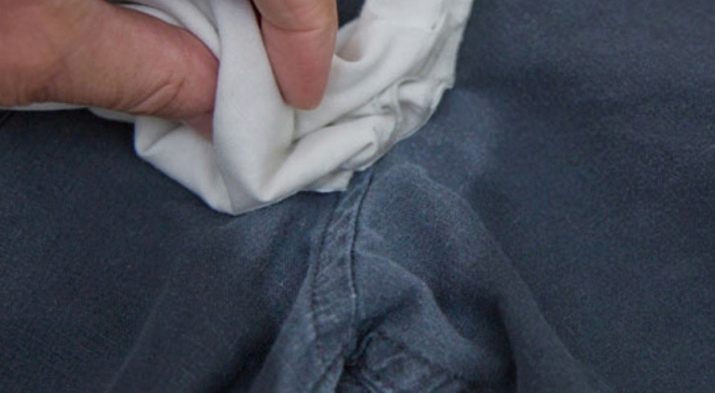
Synthetics
Synthetics need more frequent washings. For such materials, you can use any of the available means. Washing can be carried out in the machine at low speeds and at low temperature or manually, but strong twisting should be avoided.
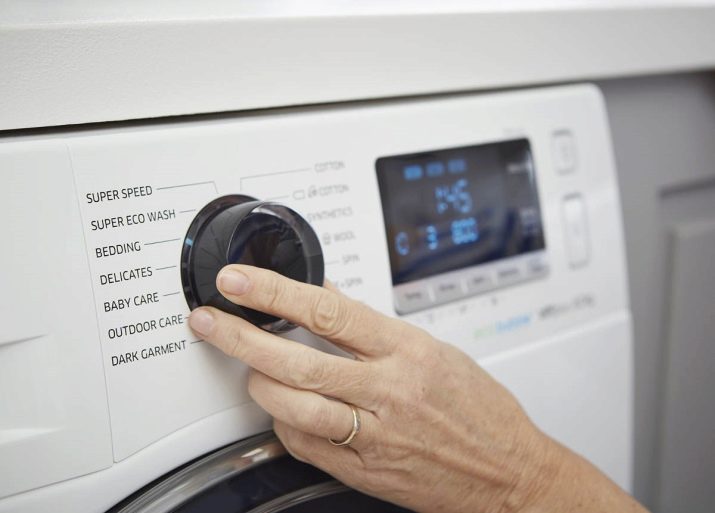
In order for the traces of deodorant to be removed qualitatively and permanently, it is necessary to take into account what color clothes should be removed.
White
Yellow traces can be removed from white cloth with peroxide and vinegar. Drying in the sun will provide a more effective result. White synthetics clean well and safely with aspirin.
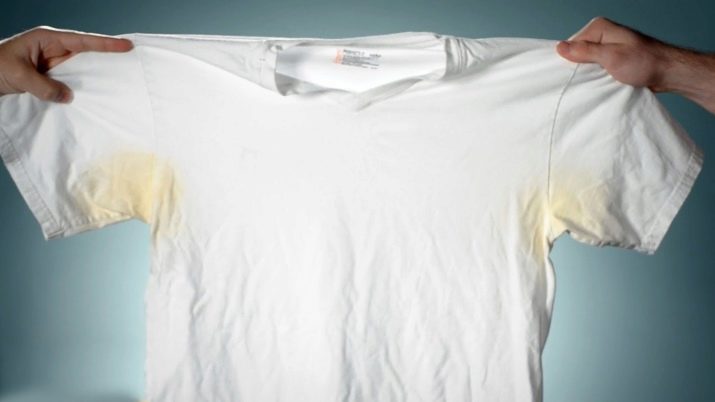
Dark
Dark fabric cleans well with laundry soap. If this method does not give a positive result, then alcohol, lemon juice and dishwashing detergent will come to the rescue. Demonstrates high efficiency a mixture of soda and vinegar, but it can not be used on delicate fabrics.
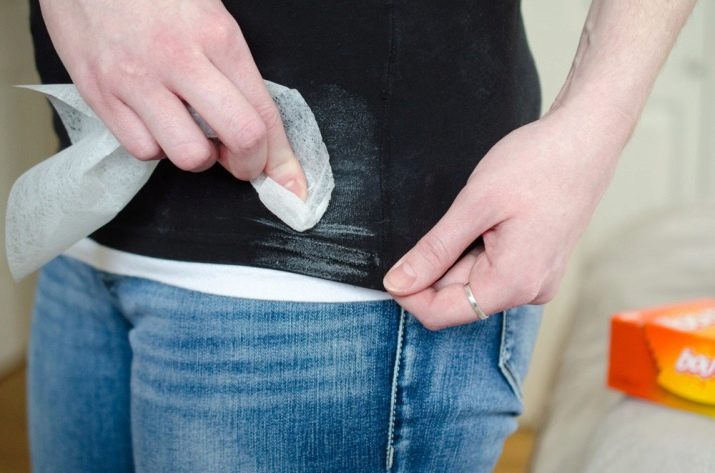
Color
Colored materials, including red things, require caution in choosing a method for stain removal. For example, wool, silk and viscose are afraid of vinegar, which can be safely used on other fabrics. Moreover, it will make the paint more stable. After vinegar, you can use soap or special household chemicals.
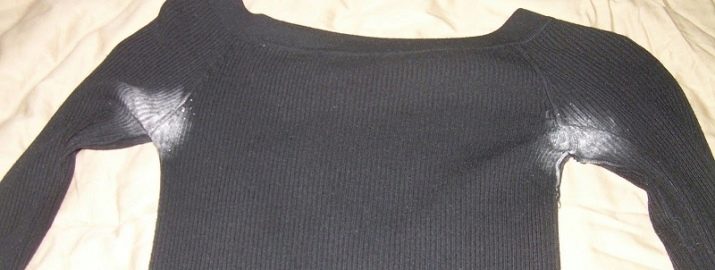
Special attention should be paid to old spots, which are more difficult to remove. Therefore, you need to remove dirt immediately after their appearance, and not wait until the T-shirt hardens in the armpits. To combat such complex pollution, the following method must be used:
- rub the stain with ordinary household soap;
- place the product in soapy water for at least 6 hours;
- rinse thoroughly;
- if the desired effect has not been achieved, sprinkle with salt and three brushes;
- wash the product, rinse and dry.
Overview of folk remedies
You can remove traces of antiperspirant with improvised means that are available in every home. The effectiveness of these methods has been repeatedly proven in practice.
Vodka perfectly copes with spots of various nature, including deodorants. It must be applied to the contaminated area and leave the thing in this condition for 45-60 minutes. At this time, a concentrated soap solution should be prepared. We wash clothes in it, rinse well and dry.
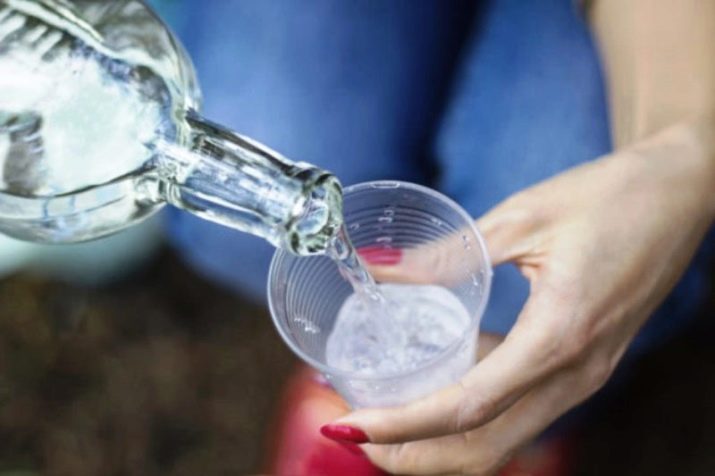
Vinegar It also allows you to quickly and efficiently remove dirt from clothes, especially from dark things. Regular table vinegar needs to be soaked in a contaminated place and left in this condition for about an hour and a half. It remains only to wash and dry. Such a tool can not be used on light fabrics, since they can acquire a yellow tint.
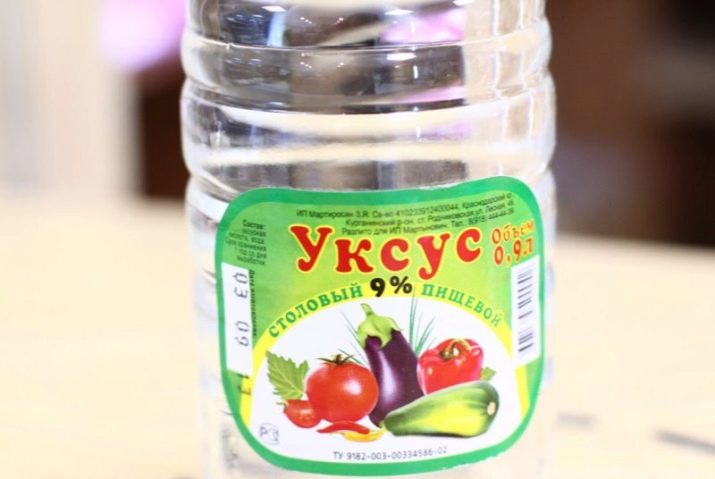
Dishwashing liquid actively used to remove stains of various nature at home. A small amount of the composition should be applied to the traces of the antiperspirant, rub and rinse after half an hour. In case of severe contamination, you will have to repeat the procedure.

Acetylsalicylic acid is available in almost every first-aid kit, while few people think about its power to affect stains. To get rid of stains, it is necessary to crush 4 tablets.A little water is added to the resulting powder. You should get a thick, mushy mixture. We apply the resulting composition to contamination and leave to dry. Rinse and wash.

Soda It is used in a similar manner as described above.
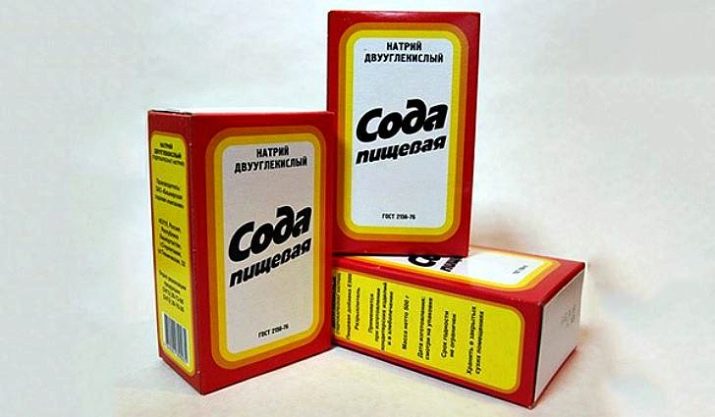
Lemon juice squeeze into spots and leave for 45 minutes. Then wash the product by hand.

Hydrogen peroxide - This is the usual peroxide with which we treat wounds. The product is applied to the stains, left for 2 hours, after which it remains only to wash the product. The result will be better if you add a little gel for washing dishes and soda to the peroxide.
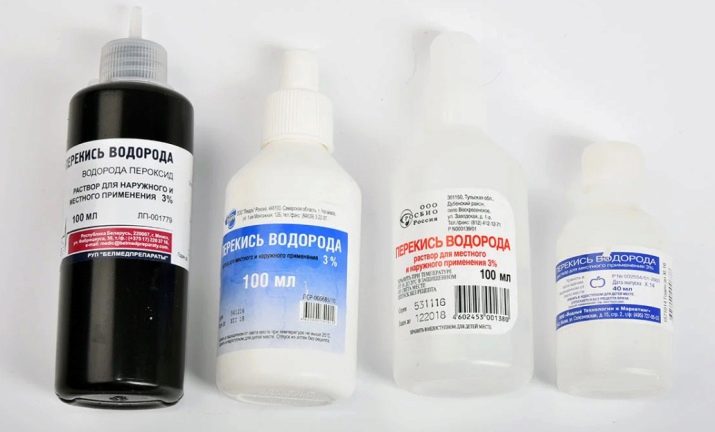
Ammonia divorced with water in equal proportions. This tool can even clean old and large spots. Ammonia is aged on the product for only a few minutes - this time will be enough to get a positive result.
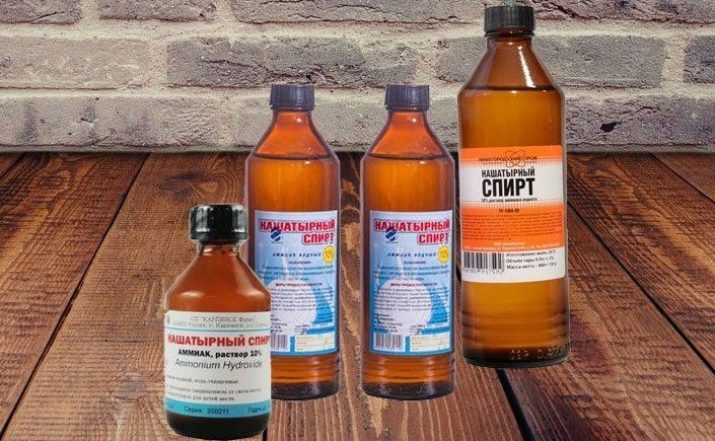
Laundry soap has no restrictions on the color of fabrics - this is its versatility. Soap needs to be crushed, it is better to grate, and dissolve in a small amount of water. The resulting composition is applied to the contamination, after which you can wash the thing.

Ammonia is a powerful tool that must be used with caution. It will be enough to overexposure it on clothes, as it will irreparably deteriorate. This product is contraindicated for delicate materials. Gloves must be used to work with ammonia. The product is diluted in equal proportions with water. In this solution, we wet the sponge and process the stains. We wait a few minutes and wash the product manually or in a washing machine.
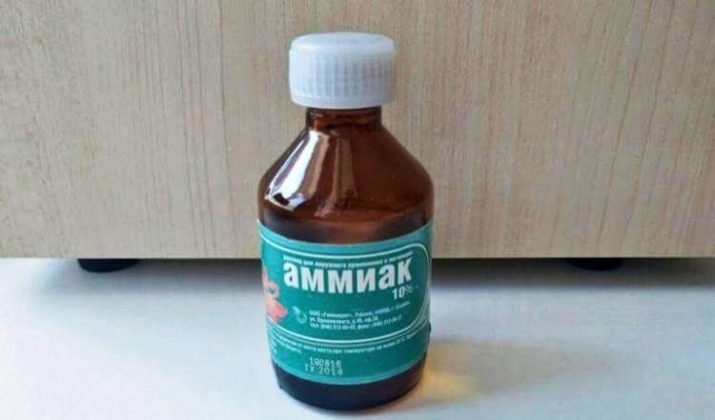
Salt surprisingly demonstrates high efficiency when it comes to removing complex contaminants and removing unpleasant odors. The spot spot must be moistened first, then abundantly poured with salt and left in this form for 12 hours. Wet again, pour salt and three hands. We erase the thing.
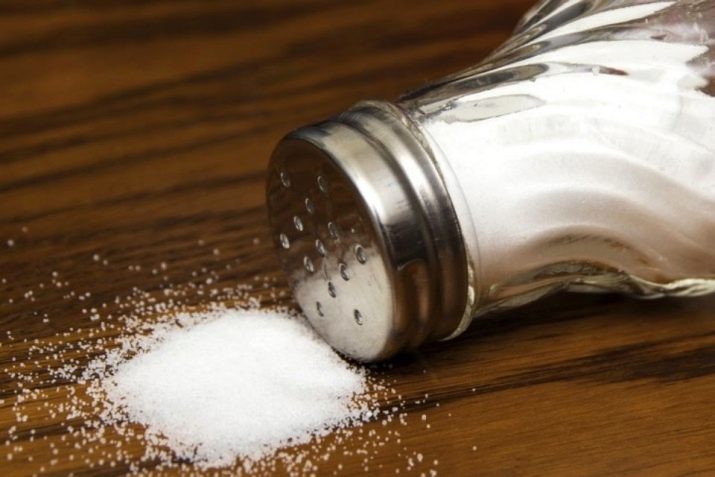
- Conventional nylon, from which women's dimensionless tights are made, will help to remove white traces of antiperspirant. To do this, just rub the place with pollution with a piece of nylon.
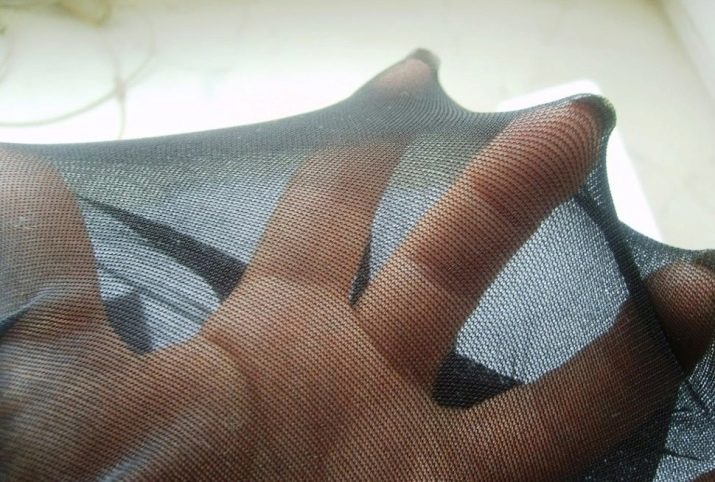
How to remove traces of household chemicals?
You can wash the deodorant marks with special tools, which are enough in stores.
Company Frau Schmidt well known to the hostesses. In the assortment of this manufacturer there are a lot of bleaches with soft action and special stain removers. They are based on bile concentrate. Any of these agents gently affects the material, preserves its structure and the brightness of colors. With any of them, it will not be a problem to wipe off your favorite thing.

Vanish is a popular stain remover of various kinds. The company produces liquid and powder formulations that cope with the most difficult spots with equal effectiveness, including deodorants.
Each packaging has detailed instructions for use.
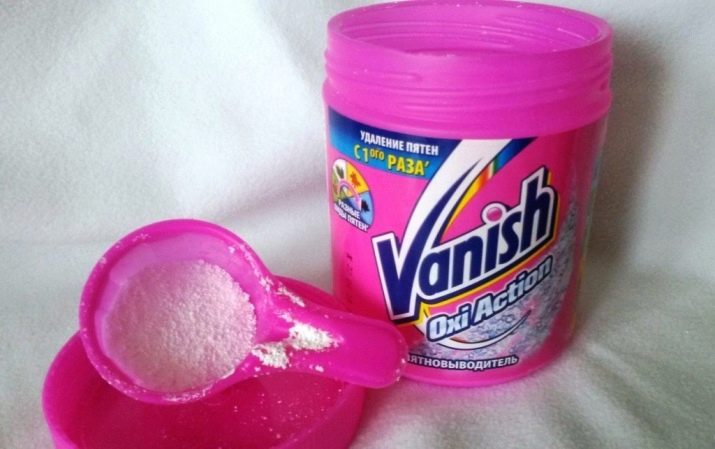
Amway although it is a network company, but the means of this brand are really effective in terms of combating pollution of varying complexity. This household chemical product carefully removes stains even from delicate fabrics and is safe for humans. In the assortment, you can easily find the right tool that will be suitable for a particular case. Stain removers are available in the form of powders, concentrates, gels and sprays.
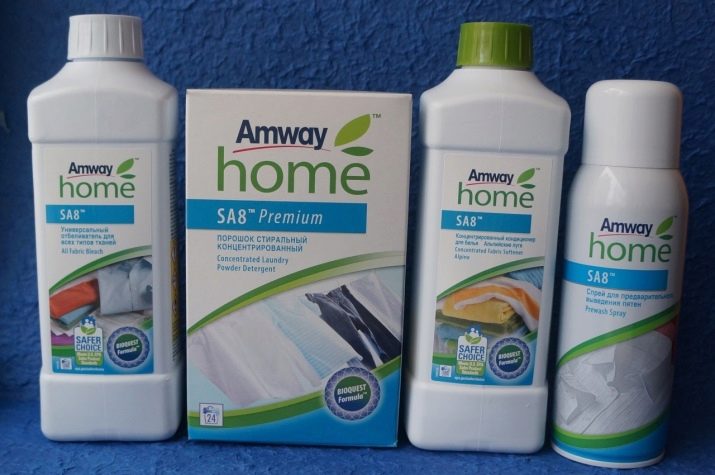
- Dr. Beckmann over the years has been enviable popular with housewives. Such success is explained by high quality and affordability. You can choose a universal tool or buy a special stain remover that is designed to combat stains from antiperspirant.
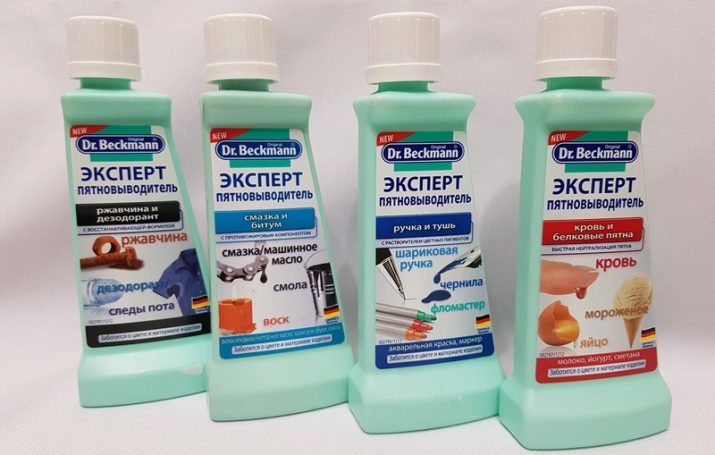
Useful Tips
And at the end, a few helpful suggestions, which will help return the product to its previous appearance:
- in the case of using household chemicals, it is necessary to carefully study the manufacturer's recommendations and adhere to them, otherwise you can spoil the thing and even harm your health;
- any product has an expiration date after which it cannot be used;
- Before using any of the methods described above, it is necessary to test on an inconspicuous area of clothing;
- to prevent the formation of the border of the treated area, it is necessary to rub a little the place of contamination with a brush before cleaning or wet the surrounding area of the fabric;
- it is necessary to clear pollution from borders to the middle, in this case the spot will not increase;
- any stain remover is selected according to the type of material;
- stain removal should be carried out immediately after their appearance;
- when washing in water, you can add soda, which effectively kills bacteria.
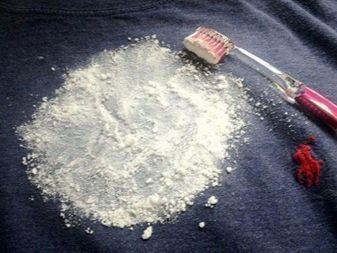
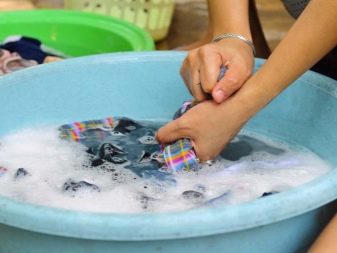
Any problem is easier to prevent. If you follow simple rules, then your clothes will not be stained after using antiperspirants:
- choose a quality product from a trusted manufacturer;
- application of a remedy for unpleasant odor should be carried out on dry axillary hollows;
- antiperspirants in the form of a spray must be sprayed at a distance of 20 cm from the body;
- You can dress only after the agent has completely dried.
On how to remove stains from deodorant, see the next video.
